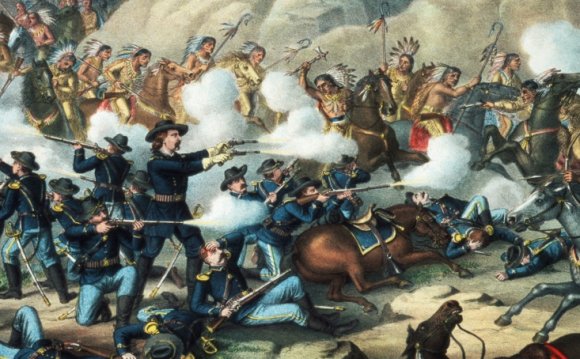
 In many parts of the U.S., Native American Day is celebrated on the fourth Friday in September. Although not a “national” holiday, Native American Day is a time set aside by individual states to honor, recognize, and appreciate the rich cultural heritage and significant contributions of the indigenous people in their respective states.
In many parts of the U.S., Native American Day is celebrated on the fourth Friday in September. Although not a “national” holiday, Native American Day is a time set aside by individual states to honor, recognize, and appreciate the rich cultural heritage and significant contributions of the indigenous people in their respective states.
One of the earliest advocates for a day to honor Native Americans was Dr. Arthur Caswell Parker. A Cattaraugus Seneca Indian, historian, anthropologist, and author from New York state, Parker’s great-uncle was secretary to Ulysses S. Grant and the first Native to serve as Commissioner of Indian Affairs for the Department of the Interior. Dr. Parker founded several Indian rights organizations, including the National Congress of American Indians and others. Parker persuaded the Boy Scouts of America to set aside a day for “First Americans, ” which they did from 1912 to 1915.
According to our research, the rest of the timeline for Native American Day goes something like this:
- 1916: Possibly the first time an American Indian Day was formally designated in the U.S., when New York’s governor set the second Saturday in May for the observance.
- 1919: The Illinois state legislature passed an act similar to New York’s.
- 1935: The governor of Massachusetts issued a proclamation naming the day for observing American Indian Day each year.
- 1976: President Ford proclaimed a week in October as “Native American Awareness Week.” Since then, the President and Congress have observed a day, a week, or a month each year in honor of the American Indian and Alaska Native peoples. And no coincidence here… 1976 marked the U.S. bicentennial.
- 1977: “Indigenous Peoples Day” was first proclaimed in Geneva, Switzerland, by representatives of Native nations at the U.N.’s International Conference on Discrimination Against Indigenous Populations in the Americas. The declaration was praised by indigenous peoples around the world.
- 1989: The South Dakota legislature declared 1990 as the “Year of Reconciliation” for Native Americans and changed Columbus Day to Native American Day at that time. South Dakota is home to 9 tribes.
- 1992: Berkeley, CA followed suit and designated 1992 as the “Year of Indigenous People” and stopped celebrating Columbus Day, despite some local criticism.
- 1998: Some 30 years after Ronald Reagan signed a resolution calling for “American Indian Day” on the fourth Friday in September, the California Assembly declared “Native American Day” an official state holiday.
Several related holidays have also been declared in honor of Native American peoples. Since 1994, August 9 has marked the, honoring indigenous populations around the world and including Native Americans. Since 2009, thanks to President Obama, the Friday immediately following Thanksgiving Day is . This is an apt remembrance given the Native contributions on and leading up to the pilgrim’s first Thanksgiving. And each year, November is American Indian & Alaska Native Heritage Month at the National Museum of the American Indian (Smithsonian).
Further, while the several Presidential proclamations did not create a national observance, the 1976 act did allow each federal agency to develop their own ways of celebrating and honoring Native American heritage. For instance, from 2003 to 2010, the Office of the Assistant Secretary-Indian Affairs in the Department of the Interior has observed these themes:
2002 – “Celebrating Our past, Celebrating Our Future”
2003 – “A Celebration of the American Indian Spirit”
2004 – “Native Nations: Continuing in the New Millennium”
2005 – “Knowledge of the Past/Wisdom for the Future”
2006 – “Tribal Diversity: Weaving Together Our Traditions”
2007 – “Keeping in Step to the Heartbeat of the Drum as We Unite as One”
2008 – “Tribes Facing Challenges: In Unity, Transforming Hope into Strengths”
2009 – “Pride in Our Heritage With Gratitude to Our Elders”
2010 – “Life is Sacred – Celebrate Healthy Native Communities”
It’s good to see that recognition for the contributions of Native American tribes, cultures, and contributions is growing. In thinking about this, two things came to mind:
1. What are the major contributions Native Americans have made?
RELATED VIDEO












